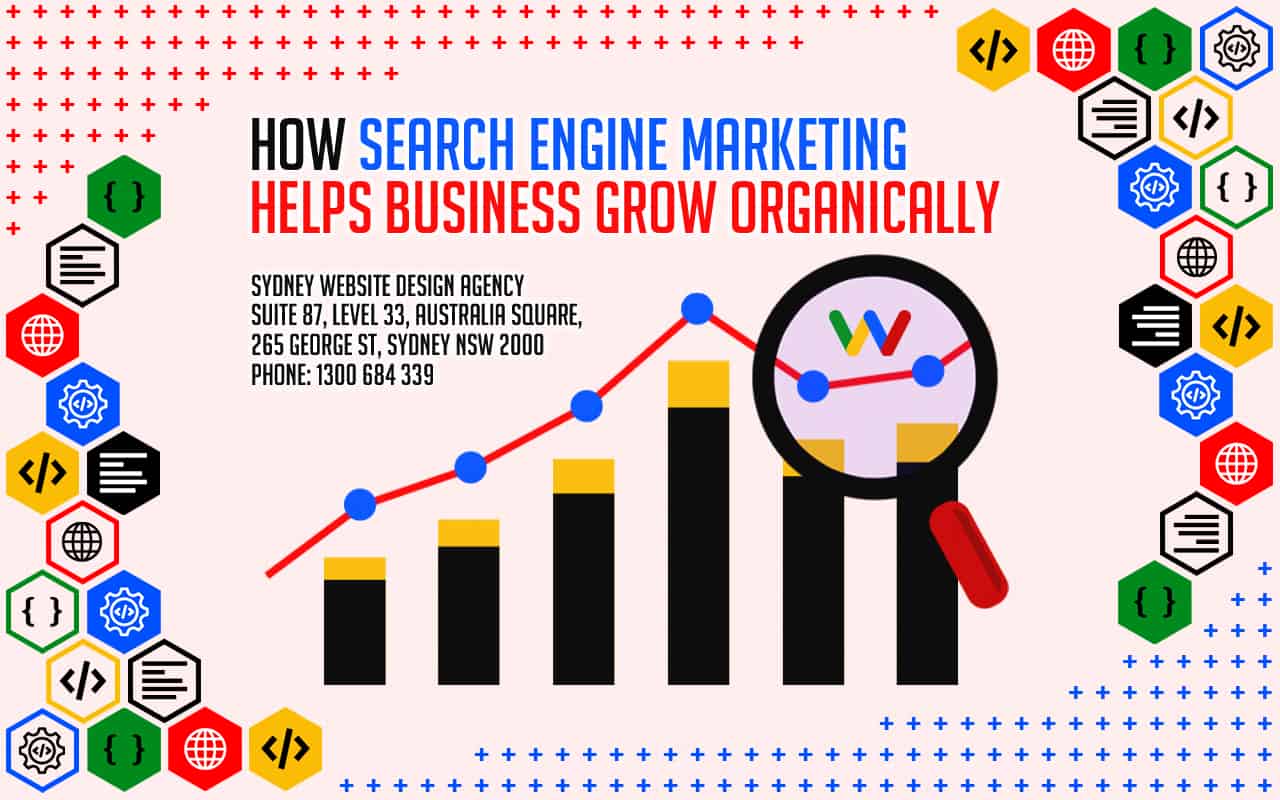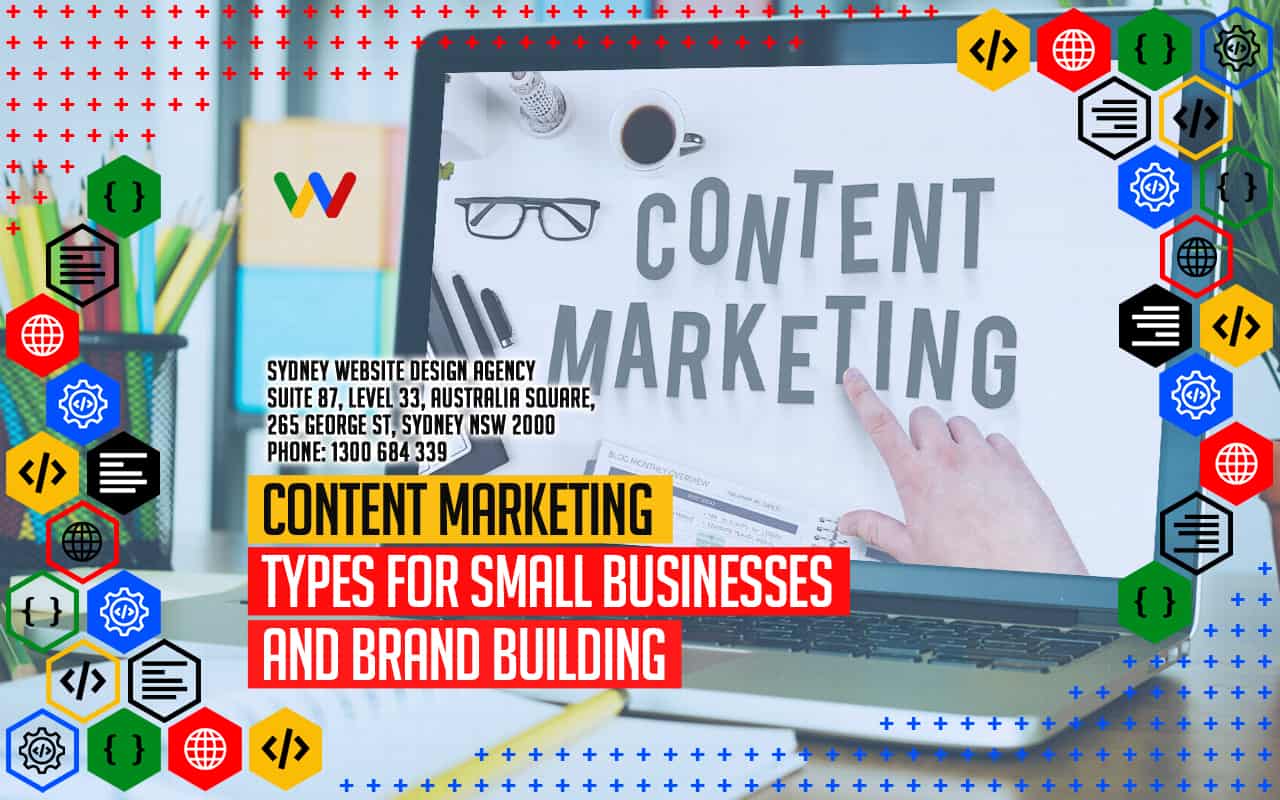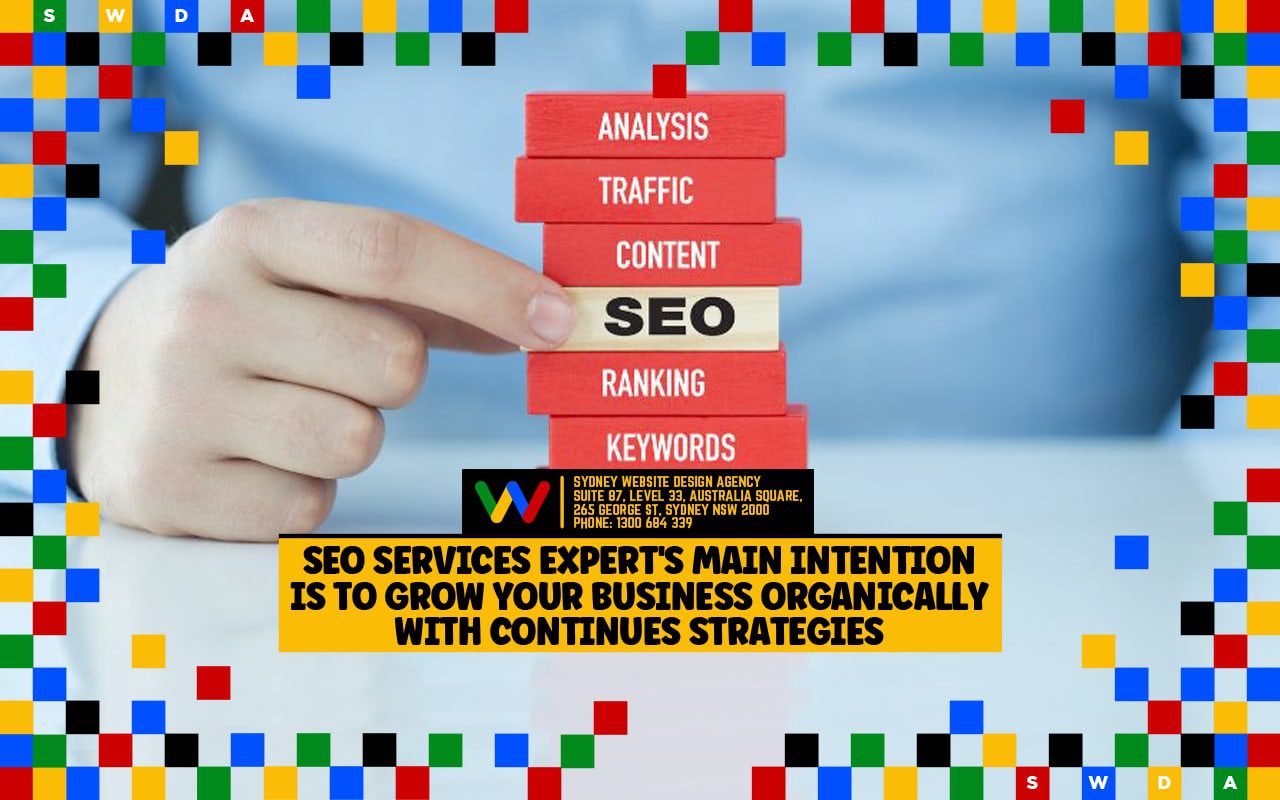

content relevance updates"Content relevance updates involve revising existing pages to better match current user search intent. Best SEO Sydney Agency. Regular updates keep content fresh, increase its usefulness, and improve the pages ranking potential."
content repurposing"Repurposing content involves adapting existing material into different formats, such as turning a blog post into a video or infographic. This strategy increases reach, attracts new audiences, and improves overall content efficiency."
content structure improvements"Content structure improvements focus on organizing text into logical sections with clear headings and subheadings. Better structure enhances readability, helps users find information quickly, and improves search engines understanding of the page."
Best SEO Agency Sydney Australia.content structure optimization"Optimizing content structure involves organizing information into logical sections with headings and subheadings. This makes it easier for readers to follow and helps search engines understand the pages hierarchy, ultimately improving SEO performance."
Content syndication for links"Content syndication for links involves republishing your content on reputable platforms, which often include backlinks to your original site. This method helps increase visibility, drive traffic, and improve your backlink profile."
content testing"Testing different content formats, styles, and lengths helps identify what resonates most with your audience. Best Search Engine Optimisation Services. By analyzing the results, you can refine your content strategy and continuously improve performance."
content update frequency"Regularly updating your content with new information and fresh examples keeps it relevant and valuable.
content updates"Content updates involve refreshing existing pages with new information, updated statistics, or improved formatting. Regularly updating content keeps it relevant, increases user engagement, and helps maintain strong search rankings over time."
Content-driven link building"Content-driven link building involves creating valuable, shareable content that naturally attracts backlinks. By producing high-quality blog posts, infographics, or videos, you increase the likelihood that other sites will link to your material."


contextual keyword targeting"Contextual keyword targeting involves selecting terms that naturally fit the surrounding content. comprehensive SEO Packages Sydney services. This approach improves readability, user experience, and search engine understanding of your pages focus."
Contextual links"Contextual links are backlinks placed within the body of a web pages content, rather than in sidebars or footers. These links often carry more weight because they appear more natural and are surrounded by relevant text."
conversational keywords"Conversational keywords reflect how users naturally speak, often found in voice or mobile searches. Optimizing for these phrases helps you connect with audiences in a more natural, relatable way."
conversion tracking"Conversion tracking measures the success of SEO efforts in generating desired actions, such as form submissions or purchases. range of SEO Services and Australia . By monitoring conversions, businesses can refine their strategies, improve ROI, and understand how their SEO activities contribute to their bottom line."
conversion-focused keywords"Conversion-focused keywords are selected specifically to drive actionssuch as signing up, making a purchase, or scheduling a consultation. By prioritizing these terms, you maximize your marketing ROI."
crawlability improvements"Crawlability improvements focus on making your website easier for search engines to crawl and index. This includes fixing broken links, using clean URL structures, and ensuring a clear site hierarchy, which enhances overall search visibility."


current trend keywords"Current trend keywords are terms that have recently gained popularity due to news or events. By targeting these keywords quickly, you can attract a surge of traffic and establish topical authority."
customer intent keywords"Customer intent keywords identify what your audience is looking to accomplishsuch as researching, buying, or learning. By targeting these terms, you create content that directly satisfies their needs."
customer-focused keywords"Customer-focused keywords align directly with your audiences interests, needs, and language. Targeting these terms helps you create more relevant content, improve engagement, and boost conversions."
Digital agency Sydney"A digital agency in Sydney offers a full suite of online marketing services, including SEO, social media management, web design, and content creation. These agencies help businesses build their brand, improve visibility, and drive measurable results in a competitive digital landscape."
Directory link building"Directory link building entails submitting your website to online directories that are relevant to your niche. While not as powerful as other methods, directories can still provide valuable backlinks and help establish a foundational link profile."
Do-follow linksDo-follow links are standard backlinks that pass authority from the linking site to the linked site. These links are essential for improving search rankings and are often the primary focus of link building efforts.

|
|
This article includes a list of general references, but it lacks sufficient corresponding inline citations. (December 2014)
|
Web indexing, or Internet indexing, comprises methods for indexing the contents of a website or of the Internet as a whole. Individual websites or intranets may use a back-of-the-book index, while search engines usually use keywords and metadata to provide a more useful vocabulary for Internet or onsite searching. With the increase in the number of periodicals that have articles online, web indexing is also becoming important for periodical websites.[1]
Back-of-the-book-style web indexes may be called "web site A-Z indexes".[2] The implication with "A-Z" is that there is an alphabetical browse view or interface. This interface differs from that of a browse through layers of hierarchical categories (also known as a taxonomy) which are not necessarily alphabetical, but are also found on some web sites. Although an A-Z index could be used to index multiple sites, rather than the multiple pages of a single site, this is unusual.
Metadata web indexing involves assigning keywords, description or phrases to web pages or web sites within a metadata tag (or "meta-tag") field, so that the web page or web site can be retrieved with a list. This method is commonly used by search engine indexing.[3]
Web design encompasses many different skills and disciplines in the production and maintenance of websites. The different areas of web design include web graphic design; user interface design (UI design); authoring, including standardised code and proprietary software; user experience design (UX design); and search engine optimization. Often many individuals will work in teams covering different aspects of the design process, although some designers will cover them all.[1] The term "web design" is normally used to describe the design process relating to the front-end (client side) design of a website including writing markup. Web design partially overlaps web engineering in the broader scope of web development. Web designers are expected to have an awareness of usability and be up to date with web accessibility guidelines.

Although web design has a fairly recent history, it can be linked to other areas such as graphic design, user experience, and multimedia arts, but is more aptly seen from a technological standpoint. It has become a large part of people's everyday lives. It is hard to imagine the Internet without animated graphics, different styles of typography, backgrounds, videos and music. The web was announced on August 6, 1991; in November 1992, CERN was the first website to go live on the World Wide Web. During this period, websites were structured by using the <table> tag which created numbers on the website. Eventually, web designers were able to find their way around it to create more structures and formats. In early history, the structure of the websites was fragile and hard to contain, so it became very difficult to use them. In November 1993, ALIWEB was the first ever search engine to be created (Archie Like Indexing for the WEB).[2]
In 1989, whilst working at CERN in Switzerland, British scientist Tim Berners-Lee proposed to create a global hypertext project, which later became known as the World Wide Web. From 1991 to 1993 the World Wide Web was born. Text-only HTML pages could be viewed using a simple line-mode web browser.[3] In 1993 Marc Andreessen and Eric Bina, created the Mosaic browser. At the time there were multiple browsers, however the majority of them were Unix-based and naturally text-heavy. There had been no integrated approach to graphic design elements such as images or sounds. The Mosaic browser broke this mould.[4] The W3C was created in October 1994 to "lead the World Wide Web to its full potential by developing common protocols that promote its evolution and ensure its interoperability."[5] This discouraged any one company from monopolizing a proprietary browser and programming language, which could have altered the effect of the World Wide Web as a whole. The W3C continues to set standards, which can today be seen with JavaScript and other languages. In 1994 Andreessen formed Mosaic Communications Corp. that later became known as Netscape Communications, the Netscape 0.9 browser. Netscape created its HTML tags without regard to the traditional standards process. For example, Netscape 1.1 included tags for changing background colours and formatting text with tables on web pages. From 1996 to 1999 the browser wars began, as Microsoft and Netscape fought for ultimate browser dominance. During this time there were many new technologies in the field, notably Cascading Style Sheets, JavaScript, and Dynamic HTML. On the whole, the browser competition did lead to many positive creations and helped web design evolve at a rapid pace.[6]
In 1996, Microsoft released its first competitive browser, which was complete with its features and HTML tags. It was also the first browser to support style sheets, which at the time was seen as an obscure authoring technique and is today an important aspect of web design.[6] The HTML markup for tables was originally intended for displaying tabular data. However, designers quickly realized the potential of using HTML tables for creating complex, multi-column layouts that were otherwise not possible. At this time, as design and good aesthetics seemed to take precedence over good markup structure, little attention was paid to semantics and web accessibility. HTML sites were limited in their design options, even more so with earlier versions of HTML. To create complex designs, many web designers had to use complicated table structures or even use blank spacer .GIF images to stop empty table cells from collapsing.[7] CSS was introduced in December 1996 by the W3C to support presentation and layout. This allowed HTML code to be semantic rather than both semantic and presentational and improved web accessibility, see tableless web design.
In 1996, Flash (originally known as FutureSplash) was developed. At the time, the Flash content development tool was relatively simple compared to now, using basic layout and drawing tools, a limited precursor to ActionScript, and a timeline, but it enabled web designers to go beyond the point of HTML, animated GIFs and JavaScript. However, because Flash required a plug-in, many web developers avoided using it for fear of limiting their market share due to lack of compatibility. Instead, designers reverted to GIF animations (if they did not forego using motion graphics altogether) and JavaScript for widgets. But the benefits of Flash made it popular enough among specific target markets to eventually work its way to the vast majority of browsers, and powerful enough to be used to develop entire sites.[7]
In 1998, Netscape released Netscape Communicator code under an open-source licence, enabling thousands of developers to participate in improving the software. However, these developers decided to start a standard for the web from scratch, which guided the development of the open-source browser and soon expanded to a complete application platform.[6] The Web Standards Project was formed and promoted browser compliance with HTML and CSS standards. Programs like Acid1, Acid2, and Acid3 were created in order to test browsers for compliance with web standards. In 2000, Internet Explorer was released for Mac, which was the first browser that fully supported HTML 4.01 and CSS 1. It was also the first browser to fully support the PNG image format.[6] By 2001, after a campaign by Microsoft to popularize Internet Explorer, Internet Explorer had reached 96% of web browser usage share, which signified the end of the first browser wars as Internet Explorer had no real competition.[8]
Since the start of the 21st century, the web has become more and more integrated into people's lives. As this has happened the technology of the web has also moved on. There have also been significant changes in the way people use and access the web, and this has changed how sites are designed.
Since the end of the browsers wars[when?] new browsers have been released. Many of these are open source, meaning that they tend to have faster development and are more supportive of new standards. The new options are considered by many[weasel words] to be better than Microsoft's Internet Explorer.
The W3C has released new standards for HTML (HTML5) and CSS (CSS3), as well as new JavaScript APIs, each as a new but individual standard.[when?] While the term HTML5 is only used to refer to the new version of HTML and some of the JavaScript APIs, it has become common to use it to refer to the entire suite of new standards (HTML5, CSS3 and JavaScript).
With the advancements in 3G and LTE internet coverage, a significant portion of website traffic shifted to mobile devices. This shift influenced the web design industry, steering it towards a minimalist, lighter, and more simplistic style. The "mobile first" approach emerged as a result, emphasizing the creation of website designs that prioritize mobile-oriented layouts first, before adapting them to larger screen dimensions.
Web designers use a variety of different tools depending on what part of the production process they are involved in. These tools are updated over time by newer standards and software but the principles behind them remain the same. Web designers use both vector and raster graphics editors to create web-formatted imagery or design prototypes. A website can be created using WYSIWYG website builder software or a content management system, or the individual web pages can be hand-coded in just the same manner as the first web pages were created. Other tools web designers might use include markup validators[9] and other testing tools for usability and accessibility to ensure their websites meet web accessibility guidelines.[10]
One popular tool in web design is UX Design, a type of art that designs products to perform an accurate user background. UX design is very deep. UX is more than the web, it is very independent, and its fundamentals can be applied to many other browsers or apps. Web design is mostly based on web-based things. UX can overlap both web design and design. UX design mostly focuses on products that are less web-based.[11]
Marketing and communication design on a website may identify what works for its target market. This can be an age group or particular strand of culture; thus the designer may understand the trends of its audience. Designers may also understand the type of website they are designing, meaning, for example, that (B2B) business-to-business website design considerations might differ greatly from a consumer-targeted website such as a retail or entertainment website. Careful consideration might be made to ensure that the aesthetics or overall design of a site do not clash with the clarity and accuracy of the content or the ease of web navigation,[12] especially on a B2B website. Designers may also consider the reputation of the owner or business the site is representing to make sure they are portrayed favorably. Web designers normally oversee all the websites that are made on how they work or operate on things. They constantly are updating and changing everything on websites behind the scenes. All the elements they do are text, photos, graphics, and layout of the web. Before beginning work on a website, web designers normally set an appointment with their clients to discuss layout, colour, graphics, and design. Web designers spend the majority of their time designing websites and making sure the speed is right. Web designers typically engage in testing and working, marketing, and communicating with other designers about laying out the websites and finding the right elements for the websites.[13]
User understanding of the content of a website often depends on user understanding of how the website works. This is part of the user experience design. User experience is related to layout, clear instructions, and labeling on a website. How well a user understands how they can interact on a site may also depend on the interactive design of the site. If a user perceives the usefulness of the website, they are more likely to continue using it. Users who are skilled and well versed in website use may find a more distinctive, yet less intuitive or less user-friendly website interface useful nonetheless. However, users with less experience are less likely to see the advantages or usefulness of a less intuitive website interface. This drives the trend for a more universal user experience and ease of access to accommodate as many users as possible regardless of user skill.[14] Much of the user experience design and interactive design are considered in the user interface design.
Advanced interactive functions may require plug-ins if not advanced coding language skills. Choosing whether or not to use interactivity that requires plug-ins is a critical decision in user experience design. If the plug-in doesn't come pre-installed with most browsers, there's a risk that the user will have neither the know-how nor the patience to install a plug-in just to access the content. If the function requires advanced coding language skills, it may be too costly in either time or money to code compared to the amount of enhancement the function will add to the user experience. There's also a risk that advanced interactivity may be incompatible with older browsers or hardware configurations. Publishing a function that doesn't work reliably is potentially worse for the user experience than making no attempt. It depends on the target audience if it's likely to be needed or worth any risks.

Progressive enhancement is a strategy in web design that puts emphasis on web content first, allowing everyone to access the basic content and functionality of a web page, whilst users with additional browser features or faster Internet access receive the enhanced version instead.
In practice, this means serving content through HTML and applying styling and animation through CSS to the technically possible extent, then applying further enhancements through JavaScript. Pages' text is loaded immediately through the HTML source code rather than having to wait for JavaScript to initiate and load the content subsequently, which allows content to be readable with minimum loading time and bandwidth, and through text-based browsers, and maximizes backwards compatibility.[15]
As an example, MediaWiki-based sites including Wikipedia use progressive enhancement, as they remain usable while JavaScript and even CSS is deactivated, as pages' content is included in the page's HTML source code, whereas counter-example Everipedia relies on JavaScript to load pages' content subsequently; a blank page appears with JavaScript deactivated.
Part of the user interface design is affected by the quality of the page layout. For example, a designer may consider whether the site's page layout should remain consistent on different pages when designing the layout. Page pixel width may also be considered vital for aligning objects in the layout design. The most popular fixed-width websites generally have the same set width to match the current most popular browser window, at the current most popular screen resolution, on the current most popular monitor size. Most pages are also center-aligned for concerns of aesthetics on larger screens.
Fluid layouts increased in popularity around 2000 to allow the browser to make user-specific layout adjustments to fluid layouts based on the details of the reader's screen (window size, font size relative to window, etc.). They grew as an alternative to HTML-table-based layouts and grid-based design in both page layout design principles and in coding technique but were very slow to be adopted.[note 1] This was due to considerations of screen reading devices and varying windows sizes which designers have no control over. Accordingly, a design may be broken down into units (sidebars, content blocks, embedded advertising areas, navigation areas) that are sent to the browser and which will be fitted into the display window by the browser, as best it can. Although such a display may often change the relative position of major content units, sidebars may be displaced below body text rather than to the side of it. This is a more flexible display than a hard-coded grid-based layout that doesn't fit the device window. In particular, the relative position of content blocks may change while leaving the content within the block unaffected. This also minimizes the user's need to horizontally scroll the page.
Responsive web design is a newer approach, based on CSS3, and a deeper level of per-device specification within the page's style sheet through an enhanced use of the CSS @media rule. In March 2018 Google announced they would be rolling out mobile-first indexing.[16] Sites using responsive design are well placed to ensure they meet this new approach.
Web designers may choose to limit the variety of website typefaces to only a few which are of a similar style, instead of using a wide range of typefaces or type styles. Most browsers recognize a specific number of safe fonts, which designers mainly use in order to avoid complications.
Font downloading was later included in the CSS3 fonts module and has since been implemented in Safari 3.1, Opera 10, and Mozilla Firefox 3.5. This has subsequently increased interest in web typography, as well as the usage of font downloading.
Most site layouts incorporate negative space to break the text up into paragraphs and also avoid center-aligned text.[17]
The page layout and user interface may also be affected by the use of motion graphics. The choice of whether or not to use motion graphics may depend on the target market for the website. Motion graphics may be expected or at least better received with an entertainment-oriented website. However, a website target audience with a more serious or formal interest (such as business, community, or government) might find animations unnecessary and distracting if only for entertainment or decoration purposes. This doesn't mean that more serious content couldn't be enhanced with animated or video presentations that is relevant to the content. In either case, motion graphic design may make the difference between more effective visuals or distracting visuals.
Motion graphics that are not initiated by the site visitor can produce accessibility issues. The World Wide Web consortium accessibility standards require that site visitors be able to disable the animations.[18]
Website designers may consider it to be good practice to conform to standards. This is usually done via a description specifying what the element is doing. Failure to conform to standards may not make a website unusable or error-prone, but standards can relate to the correct layout of pages for readability as well as making sure coded elements are closed appropriately. This includes errors in code, a more organized layout for code, and making sure IDs and classes are identified properly. Poorly coded pages are sometimes colloquially called tag soup. Validating via W3C[9] can only be done when a correct DOCTYPE declaration is made, which is used to highlight errors in code. The system identifies the errors and areas that do not conform to web design standards. This information can then be corrected by the user.[19]
There are two ways websites are generated: statically or dynamically.
A static website stores a unique file for every page of a static website. Each time that page is requested, the same content is returned. This content is created once, during the design of the website. It is usually manually authored, although some sites use an automated creation process, similar to a dynamic website, whose results are stored long-term as completed pages. These automatically created static sites became more popular around 2015, with generators such as Jekyll and Adobe Muse.[20]
The benefits of a static website are that they were simpler to host, as their server only needed to serve static content, not execute server-side scripts. This required less server administration and had less chance of exposing security holes. They could also serve pages more quickly, on low-cost server hardware. This advantage became less important as cheap web hosting expanded to also offer dynamic features, and virtual servers offered high performance for short intervals at low cost.
Almost all websites have some static content, as supporting assets such as images and style sheets are usually static, even on a website with highly dynamic pages.
Dynamic websites are generated on the fly and use server-side technology to generate web pages. They typically extract their content from one or more back-end databases: some are database queries across a relational database to query a catalog or to summarise numeric information, and others may use a document database such as MongoDB or NoSQL to store larger units of content, such as blog posts or wiki articles.
In the design process, dynamic pages are often mocked-up or wireframed using static pages. The skillset needed to develop dynamic web pages is much broader than for a static page, involving server-side and database coding as well as client-side interface design. Even medium-sized dynamic projects are thus almost always a team effort.
When dynamic web pages first developed, they were typically coded directly in languages such as Perl, PHP or ASP. Some of these, notably PHP and ASP, used a 'template' approach where a server-side page resembled the structure of the completed client-side page, and data was inserted into places defined by 'tags'. This was a quicker means of development than coding in a purely procedural coding language such as Perl.
Both of these approaches have now been supplanted for many websites by higher-level application-focused tools such as content management systems. These build on top of general-purpose coding platforms and assume that a website exists to offer content according to one of several well-recognised models, such as a time-sequenced blog, a thematic magazine or news site, a wiki, or a user forum. These tools make the implementation of such a site very easy, and a purely organizational and design-based task, without requiring any coding.
Editing the content itself (as well as the template page) can be done both by means of the site itself and with the use of third-party software. The ability to edit all pages is provided only to a specific category of users (for example, administrators, or registered users). In some cases, anonymous users are allowed to edit certain web content, which is less frequent (for example, on forums - adding messages). An example of a site with an anonymous change is Wikipedia.
Usability experts, including Jakob Nielsen and Kyle Soucy, have often emphasised homepage design for website success and asserted that the homepage is the most important page on a website.[21] Nielsen, Jakob; Tahir, Marie (October 2001), Homepage Usability: 50 Websites Deconstructed, New Riders Publishing, ISBN 978-0-7357-1102-0[22][23] However practitioners into the 2000s were starting to find that a growing number of website traffic was bypassing the homepage, going directly to internal content pages through search engines, e-newsletters and RSS feeds.[24] This led many practitioners to argue that homepages are less important than most people think.[25][26][27][28] Jared Spool argued in 2007 that a site's homepage was actually the least important page on a website.[29]
In 2012 and 2013, carousels (also called 'sliders' and 'rotating banners') have become an extremely popular design element on homepages, often used to showcase featured or recent content in a confined space.[30] Many practitioners argue that carousels are an ineffective design element and hurt a website's search engine optimisation and usability.[30][31][32]
There are two primary jobs involved in creating a website: the web designer and web developer, who often work closely together on a website.[33] The web designers are responsible for the visual aspect, which includes the layout, colouring, and typography of a web page. Web designers will also have a working knowledge of markup languages such as HTML and CSS, although the extent of their knowledge will differ from one web designer to another. Particularly in smaller organizations, one person will need the necessary skills for designing and programming the full web page, while larger organizations may have a web designer responsible for the visual aspect alone.
Further jobs which may become involved in the creation of a website include:
Chat GPT and other AI models are being used to write and code websites making it faster and easier to create websites. There are still discussions about the ethical implications on using artificial intelligence for design as the world becomes more familiar with using AI for time-consuming tasks used in design processes.[34]
<table>-based markup and spacer .GIF imagescite web: CS1 maint: numeric names: authors list (link)cite web: CS1 maint: numeric names: authors list (link)
A content agency in Sydney focuses on creating high-quality, SEO-optimized content that resonates with your target audience. Their services typically include blog writing, website copy, video production, and other forms of media designed to attract traffic and improve search rankings.
A local SEO agency specializes in improving a business's visibility within a specific geographic area. They focus on optimizing local citations, managing Google My Business profiles, and targeting location-based keywords to attract nearby customers.
SEO, or search engine optimisation, means improving your website's structure, content, and overall performance to rank higher in search results. This leads to more organic traffic, increased brand visibility, and better conversion rates, ultimately supporting your business's growth.